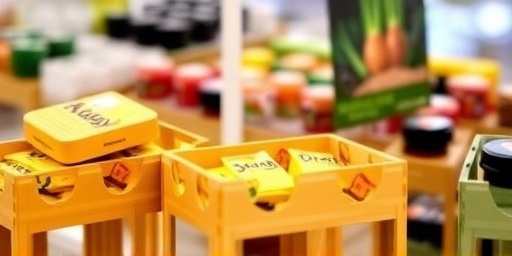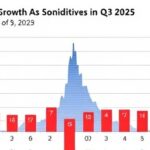As the U.S. government shutdown stretches into its third week, millions of Americans relying on SNAP benefits are staring down a potential cliff for their November food assistance. The uncertainty has ignited widespread alarm, with experts warning that lapsed payments could slash consumer spending and exacerbate short-term strains on the economy. Families across the nation, from urban centers to rural heartlands, are bracing for disrupted access to essential groceries, highlighting the human cost of congressional gridlock.
The Supplemental Nutrition Assistance Program (SNAP), which supports over 41 million low-income individuals monthly, operates under the U.S. Department of Agriculture (USDA). With federal employees furloughed due to the shutdown, administrative delays threaten timely benefit issuance. According to the Center on Budget and Policy Priorities, a nonpartisan think tank, even a brief interruption could leave up to 5 million households without funds for basic nutrition, amplifying food insecurity at a time when inflation is already pinching wallets.
Low-Income Families Grapple with Imminent Benefit Delays
In cities like Detroit and rural counties in Appalachia, the specter of missed SNAP benefits is hitting hardest. Single mothers, elderly retirees, and working poor families—who make up the bulk of SNAP recipients—are voicing frustration over the political standoff. “We’ve already cut back on everything else; without SNAP, we might have to choose between food and rent,” said Maria Gonzalez, a 42-year-old cashier from Chicago, in an interview with local news affiliates.
Statistics paint a grim picture: SNAP benefits average about $250 per person monthly, injecting over $60 billion into the economy annually through grocery purchases. A USDA report from prior shutdowns, like the 2018-2019 event, showed that benefit delays led to a 10% drop in food stamp redemptions in affected states. This time, with the shutdown coinciding with holiday preparations, the timing couldn’t be worse. Advocacy groups such as Feeding America estimate that food banks could see a 20-30% surge in demand if benefits falter, overwhelming already stretched resources.
The program’s reach is vast, covering 1 in 8 Americans, including 2 million seniors and 16 million children. In states like California and New York, where participation rates exceed 15%, the ripple effects could strain local economies dependent on supermarket sales. Economists note that every dollar in SNAP spending generates $1.50 to $1.80 in economic activity, underscoring how a shutdown-induced lapse could dampen retail sectors just before Black Friday.
Behind-the-Scenes Chaos in SNAP Administration
The mechanics of SNAP delivery rely on a network of federal, state, and local agencies, all grinding to a halt without congressional funding. Furloughed USDA staff, numbering in the thousands, handle everything from eligibility verification to electronic benefit transfer (EBT) card loading. Without them, states face backlogs that could delay November’s benefits by weeks, even if the shutdown ends soon.
During the 2013 shutdown, similar disruptions forced 13 states to dip into contingency funds to cover SNAP payments, but not all have such buffers today. The Government Accountability Office (GAO) has flagged vulnerabilities in the system, warning that prolonged shutdowns could lead to erroneous terminations or overpayments, costing taxpayers millions in fixes. “The government shutdown isn’t just closing national parks; it’s starving the pipeline for food assistance,” remarked Sen. Debbie Stabenow (D-MI), a key agriculture committee member, in a recent floor speech.
Technologically, EBT systems might continue functioning on autopilot for a short period, but manual interventions—required for fraud checks and appeals—are frozen. This has led to proactive measures in some areas: Texas and Florida have issued alerts urging recipients to stretch October benefits, while offering hotlines for emergency aid. However, with 42 million total SNAP participants, scaling help nationwide remains a logistical nightmare amid the government shutdown.
Economists Predict Sharp Dip in Consumer Spending
Beyond immediate hunger risks, the potential SNAP lapse is sending shockwaves through economic forecasts. Consumer spending, which drives 70% of U.S. GDP, could see a noticeable contraction if benefits are delayed. A Moody’s Analytics projection estimates a $2-3 billion hit to retail sales in November alone, as low-income households redirect funds from groceries to utilities or debt.
“SNAP benefits are a cornerstone of the economy, fueling demand at grocery stores and food suppliers,” explained Dr. Elena Ramirez, an economist at the Brookings Institution. In a policy brief released this week, she highlighted data from the 2018 shutdown, where consumer spending in food sectors fell by 8%, contributing to a 0.1% drag on quarterly GDP growth. With current inflation hovering at 3.7%, the added pressure on the economy could stifle holiday retail optimism.
Small businesses, particularly independent grocers in underserved areas, stand to lose big. The National Grocers Association reports that SNAP transactions account for 10-15% of sales in many mom-and-pop stores. A sudden drop could force layoffs or closures, compounding unemployment rates already ticking up to 3.8%. Wall Street analysts, monitoring the Dow’s recent volatility, attribute a portion of market jitters to shutdown uncertainties, including SNAP’s role in stabilizing consumer spending patterns.
- Key Economic Indicators at Risk: Retail sales projections down 5% in Q4 if delays persist.
- Multiplier Effect: Reduced SNAP means less money circulating in local economies, hitting jobs in agriculture and logistics.
- Inflation Tie-In: Food prices up 5.6% year-over-year, making benefit reliability even more critical.
Federal Reserve officials have remained mum, but whispers from Capitol Hill suggest interest rate decisions could factor in shutdown fallout, potentially delaying anticipated cuts to bolster the economy.
Political Stalemate Fuels Bipartisan Backlash
The government shutdown, now the longest since 2018-2019, stems from disputes over border security funding and disaster relief packages. Republicans push for wall allocations, while Democrats demand clean continuing resolutions. This impasse has drawn sharp rebukes from both sides, with SNAP emerging as an unlikely flashpoint.
Rep. Tom Cole (R-OK), representing a district heavy on food assistance users, called the delays “unacceptable” in a CNN appearance, urging swift resolution to protect the economy. On the Democratic side, House Speaker Nancy Pelosi warned that “millions of families shouldn’t pay the price for partisan games,” linking SNAP vulnerabilities to broader failures in governance.
Public opinion polls from Gallup show 65% of Americans disapprove of the shutdown, with food assistance topping concerns for 40% of respondents. Advocacy coalitions, including the National WIC Association and anti-hunger groups, have mobilized virtual rallies, pressuring lawmakers with stories of real hardship. In a letter to President Biden, over 200 mayors from cities nationwide pleaded for intervention, emphasizing SNAP’s role in averting a public health crisis amid rising obesity and malnutrition rates.
Internationally, the impasse is drawing scrutiny, with outlets like the BBC noting how U.S. domestic woes could undermine global food aid commitments. Domestically, states are exploring workarounds: New York has allocated $100 million in state funds as a SNAP bridge, but scalability remains elusive without federal support.
Path Forward: Contingency Plans and Long-Term Reforms
As negotiations drag on, contingency measures are taking shape to mitigate the worst of the SNAP disruptions. The USDA has activated emergency protocols, allowing some states to advance benefit issuances using prior-year funds, though this covers only about 60% of recipients. Nonprofits like the Red Cross are ramping up meal distribution, partnering with retailers for discounted essentials.
Looking ahead, experts advocate for structural changes to fortify food assistance against future shutdowns. Proposals include automating more SNAP processes via AI-driven eligibility tools and creating a dedicated rainy-day fund, as recommended in a recent GAO audit. Bipartisan bills in Congress, such as the SNAP Stability Act, aim to decouple benefits from appropriations cycles, ensuring uninterrupted flow even in crises.
Economically, resolution could come not a moment too soon. The Congressional Budget Office projects that ending the shutdown by mid-November might limit GDP impact to 0.05%, but prolongation risks deeper scars on consumer confidence. For the millions tethered to SNAP benefits, the stakes are personal: stability in food access translates to workforce participation and community resilience. As holiday lights flicker on amid uncertainty, the push for compromise intensifies, with families’ futures hanging in the balance of Washington’s next move.









